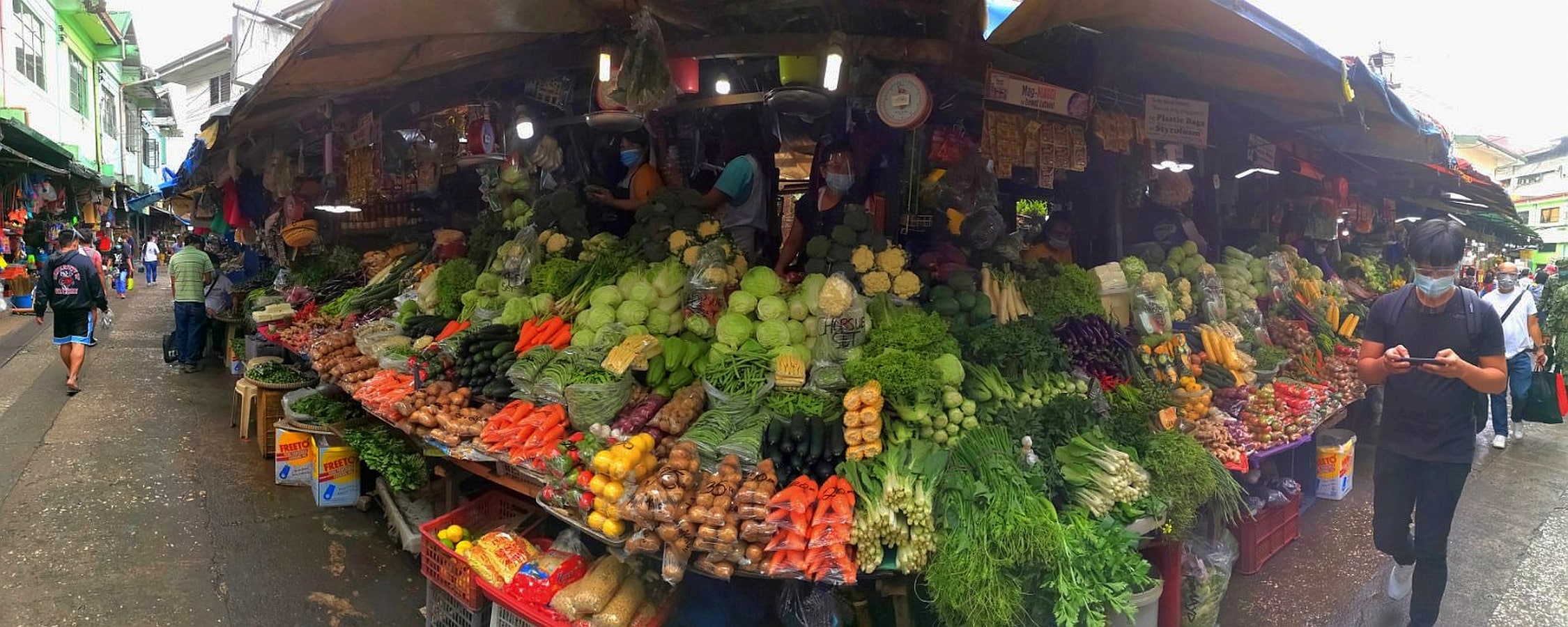
SIMPLE ABUNDANCE Baguio residents and tourists enjoyed cheaper vegetables and other food items in August compared to the previous months this year, the Philippine Statistics Authority says in a report. This section of the Baguio public market, shown here in 2022, has been a crowd drawer for salad greens that cost a lot less than those sold in supermarkets. —EV ESPIRITU
BAGUIO CITY—A significant drop in the prices of food and fuel has finally caused Cordillera’s inflation to dive in August after a sustained high rate since the start of the year.
From 4.8 percent in July, the inflation rate in the mountain region slid dramatically to 3.4 percent last month, according to chief statistician Aldrin Federico Bahit, Jr., of the Philippine Statistics Authority (PSA) in the Cordillera during a Tuesday economic briefing.
PSA had been tracking a rising trajectory of upland inflation since February, when it increased to 3.1 percent from 2.1 percent at the beginning of 2024. High food prices, particularly of rice and post-Yuletide commodities, triggered the uptrend.
Inflation peaked in April with a 4.6-percent rate and descended to 4.4 percent by May during the summer, only for food and commodity prices to once again climb, restoring the 4.6-percent rate in June and spiking to the highest 4.8-percent rate in July for Baguio and the provinces of Benguet, Ifugao, Kalinga, Apayao, Abra and Mountain Province.
Bahit said improvements to food and alcoholic beverage supply contributed to last month’s decelerated inflation.
Cheaper veggies, grains
Farms and cliffside gardens in Benguet province and parts of Mountain Province grow the daily salad vegetables, such as lettuce, carrots, potatoes, cabbages and cauliflower that are consumed in Metro Manila and the surrounding northern and central Luzon towns.
This sector saw food inflation drop to 4 percent last month from 6.5 percent in July, with vegetables, tubers and other crops that are consumed locally reflecting a -11.8-percent rate in August from 2.5 percent in July.
The negative rate suggests prices fell even though the volume of supplies during that period had not changed.
Inflation for grains and related products like rice (which was down by 19 percent in August from 21.5 percent in July) slowed down to 14.9 percent in August from 16.8 percent in July.
Food inflation for corn that feeds cattle and other farm animals dropped to 7.9 percent in August from 10.6 percent in July, while flour and bread products had a 3.4 percent inflation rate last month, from 3.7 percent in July.
Fish and other forms of seafood were rated with a 0.2-percent inflation rate in August, following a 1.8-percent rate in July.
Oil prices
The decelerated inflation for diesel (-9.7-percent rate in August from 6.3 percent in July) and gasoline (-6.8 percent in August from 2.8 percent in July) due to several price rollbacks led to a transport sector inflation drop of 2.3 percent in August from 6.5 percent in July. This occurred amid efforts to negotiate a ceasefire between Israel and Hamas fighters in Gaza, as well as improved global supplies due to Libyan output, according to various accounts.
The slowdown affected liquefied petroleum gas prices (16.4 percent last month from 18.8 percent in July), although household power expenses grew with electricity rating 4.8 percent in August, up from 3.4 percent in July.
But inflation for highland meat grew to 4.2 percent last month from 2.7 percent in July.
Growth was also noted for milk, basic dairy products and eggs (up 3.4 percent in August from 2.8 percent in July) and fruits and nuts (also up 3.8 percent in August from 2.3 percent in July).
Last month, only Mountain Province reflected an inflation uptick of 4.9 percent from a 4.8-percent rate in July. The rest of the Cordillera showed a slowdown in inflation.
Inflation in the summer capital descended to 2.9 percent in August from a 4-percent rate in July, said Benguet statistician Imelda Buyuccan.
A top tourist destination, Baguio reflected no inflationary changes to its restaurants and accommodation services, sustaining the same 5.4-percent inflation rate in July and August.